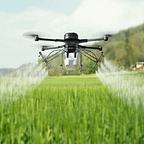What were the main highlights on progress and limitations for agricultural spray drones at the 2023 trade summit panel?
At the 2023 exchange summit panel on agricultural spray drones, enterprise professionals and stakeholders gathered to discuss the modern kingdom and future possibilities of this transformative era in agriculture. The panel furnished a comprehensive evaluation of the progress made to date, in addition to the limitations that need to be addressed for wider adoption and achievement.
Significant Advancements in Drone Technology
- One of the primary highlights mentioned changed into the large advancements in drone technology over recent years. Innovations in drone hardware, improved battery existence, increased payload ability, and superior GPS accuracy have made agricultural spray drones more efficient and reliable. Additionally, the mixing of superior sensors and imaging era has allowed drones to precisely screen crop fitness and apply remedies with excessive precision. These technological upgrades have decreased waste and ensured that pesticides and fertilizers are carried out most effectively, resulting in more sustainable farming practices.
Increased Adoption Rates Among Farmers
- The panel also highlighted the increasing adoption fees of agricultural spray drones among farmers. As more farmers come to be aware of the advantages of the use of drones for spraying, such as decreased exertion costs and advanced crop yields, the call for for this technology has grown. Pilot packages and fulfillment memories from early adopters have proven the realistic advantages of using drones in agriculture, encouraging extra farmers to invest in this generation. Moreover, government incentives and subsidies in some regions have in addition multiplied adoption by way of making the initial funding greater and less costly for farmers.
Improved Efficiency in Pesticide and Fertilizer Application
- Agricultural spray drones have revolutionized the utility of pesticides and fertilizers by making the manner more efficient and particular. The panel mentioned how drones can cover large areas of farmland quickly and uniformly, making sure that crops get the proper quantity of remedy. This precision software not only helps in optimizing resource utilization but additionally minimizes the environmental impact by decreasing runoff and overuse of chemicals. The ability to easily reprogram drones for extraordinary responsibilities and alter spraying patterns based totally on real-time information has further enhanced their efficiency and versatility in agricultural operations.
Limitations and Challenges
- Despite the progress and capacity of agricultural spray drones, the panel identified numerous limitations and demanding situations that need to be addressed for broader implementation.
Regulatory Challenges
- One of the primary limitations discussed changed into the regulatory challenges associated with the use of drones in agriculture. Different nations have varying regulations regarding drone operations, along with restrictions on flight altitude and distance and the desire for special permits. These policies can be complicated and cumbersome, creating limitations for farmers who need to undertake drone generation. The panel emphasized the need for harmonized guidelines and clear recommendations to facilitate the secure and efficient use of drones in agriculture.
High Initial Costs
- Another large venture highlighted was the high preliminary value of buying and preserving agricultural spray drones. While the long-term blessings and value of financial savings are obtrusive, premature funding can be a deterrent for small and medium-sized farmers. The panel discussed the significance of developing less expensive drone fashions and exploring financing alternatives, which include leasing or cooperative ownership, to make the era more accessible to a broader range of farmers.
Need for Skilled Operators
- The successful deployment of agricultural spray drones calls for skilled operators who can manipulate and maintain the gadget, interpret statistics, and make informed decisions based on the insights supplied via the drones. The panel mentioned that there is currently a shortage of skilled experts on this subject. To triumph over this obstacle, the panel suggested investing in training applications and educational projects to construct skilled personnel able to leverage drone technology correctly.
Future Prospects
- Looking in advance, the panel expressed optimism about the future of agricultural spray drones. They expected persistent improvements in the era, including the combination of artificial intelligence and gadgets gaining knowledge to decorate selection-making and automate extra elements of the spraying technique. Additionally, extended collaboration between industry stakeholders, government agencies, and educational establishments turned out to be critical for addressing regulatory challenges, decreasing costs, and expanding training possibilities.
In conclusion, the 2023 exchange summit panel on agricultural spray drones underscored the big developments made on this subject while additionally highlighting the challenges that need to be addressed for wider adoption. By focusing on technological innovation, regulatory reform, cost reduction, and group worker development, the rural quarter can fully harness the potential of the drone era to improve efficiency, sustainability, and productivity in farming practices.
Originally Published by SAMLI DRONES
